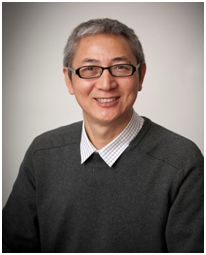Our researches

Prof. S.R. Guo
Our research interests are in the development of biodegradable polymers for biomedical and pharmaceutical applications; nano-/micro- particles for drug delivery; combined drug and medical device; and implantable drug delivery system. Over the past 10 years, We focused on the development of: 1) novel biodegradable and biocompatible polymer drug carriers; 2) novel drug delivery systems (DDSs) and nanotechnology, including micro-/nano- scale DDS and stent based DDS.
1) Novel polymeric drug carriers
We think that all new drug carriers should be meet strict function and safety requirements of DDS, where the quality and characteristic of the DDS depends critically on the drug carriers. Drug carriers for implantable or injectable DDS should have good biocompatibility, biodegradability and controlled drug delivery/release capability. Thereby, we have designed and synthesized a series of novel biodegradable and biocompatible polymers as drug carrier materials, fully studied their structure-property relationships, and investigated their biomedical and pharmaceutical applications. These polymers include: a) homo-polyesters and copolyesters of lactones, such as lactide, caproplactone, trimethylene carbonate, which can be used in medical implants with long, sustained drug release character, ranging from weeks to years. He found that the drug release character is tunable from the composition, structure and biodegradation rate of the polyesters; b) polyanhydrides, such as poly(sebacic anhydride) with fast biodegradation, are suitable for implants requiring quick drug release, e.g. hours to days; c) 24 types of amphiphilic diblock, triblock, 3-arm and 4-arm poly (ethylene glycol)-b-poly(caprolactone) (PEG-b-PCL) or PEG-b-poly(sebacic anhydride) that can assemble into micelles, hydrogels or long-circulation nanoscale DDSs; d) six chitosan derivatives, e.g. chitosan-g- (PCL-b-PEG), chitosan-g-PCL, chitosan-g-PEG; and e) novel water-soluble phosphonium chitosan derivatives with different degrees of substitution of quaternary phosphonium, are potential useful for gene delivery.
2) Novel nanoscale drug delivery systems (DDSs) and medical implant devices
We have developed several novel nanoscale DDSs and implant medical devices including:
a) Developed 5-fluorouracil (5-FU, an anticancer drug)-containing stent based DDS that has been used successfully to treat various cancers at in vitro (cell lines) and in vivo (rabbit models). This has led to a number of research publications, as well as four issued China patents. Prof. Guo was recently invited to write a review on the stent based drug delivery for Expert Opinion on Drug Delivery, a key international drug delivery journal. Moreover, he was invited to give an invited lecture at the 3rd International Conference on Drug Discovery & Therapy (Feb. 7-10, 2011, Dubai, UAE) where his work was introduced as the front cover on the special issue abstract published in the journal, Current Medicinal Chemistry.
b) Developed Poly(ethylene glycol)-b-poly(e-caprolactone), PCL-b-PEG, copolymer nanoparticles and taxol loaded nanoparticles as DDSs: the nanoparticles were prepared by the precipitation/solvent evaporation technique, their hydrolytic degradation was highly tuned by changing the composition and structure of copolymer. Taxol-loaded nanoparticles were further prepared using PEG-b-PCL (PEG 18.5%) as drug carrier and PEG-b-PCL (PEG 86.8%) as additives in the outer aqueous phase. The nanoparticle has a core-shell structure with hydrodynamic diameter of 75-105 nm. It can achieve a sustained drug release over a course of 7 days.
c) Poly(e-caprolactone) (PCL) microspheres encapsulated disodium norcantharidate (DSNC), a drug in its salt form and with high water solubility, were prepared by s/o/w solvent evaporation technique and characterized in terms of size, morphology, encapsulation efficiency and drug release, the drug-loaded microspheres had coarse surface and porous internal structure, which can be tuned by adding NaCl (3, 6 and 9%) in the continuous phase during the preparation, higher NaCl concentration resulted in smaller particle size, higher density and higher drug loading of the microspheres, a novel formation mechanism of the DSNC-loaded PCL microspheres was proposed.
d) Developed polycaprolactone (PCL) based medical implants: 1) praziquantel (PZQ) was loaded to the implant by injection molding and characterized the content uniformity, morphology, drug physical state and stability. It was found that addition of PEG into PZQ loaded PCL implants can effectively tune the drug release profile. Effects such as different cylindrical implant diameter, drug loading on drug release property were also investigated. 2) Developed a long-acting PZQ-loaded PCL implant can deliver stable, high PZQ concentrations ranging 100–1600 ng/mL in mouse plasma over a course of 40 days on mouse models. The implantation has successfully treated the schistosoma japonicum infected mouse.

